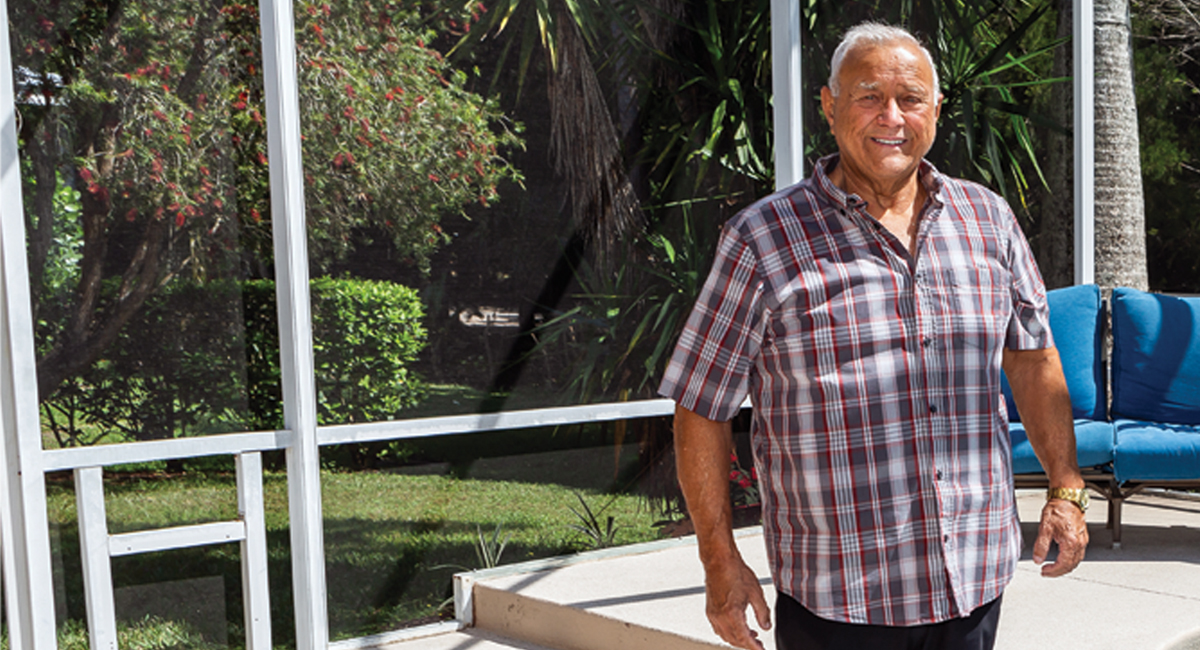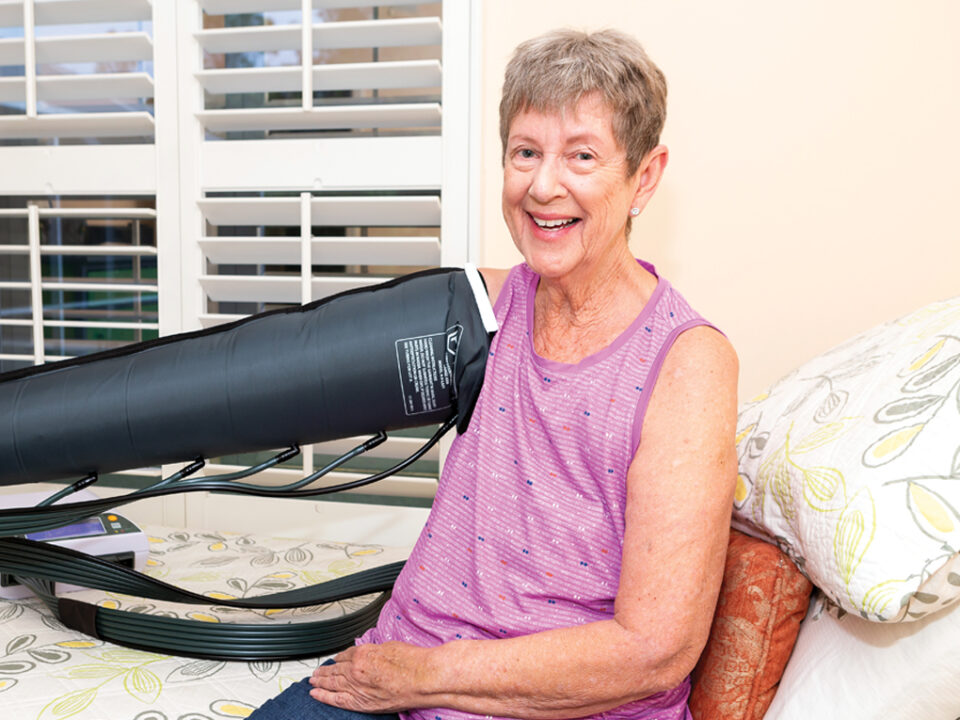

JORDAN PYSZ / iFoundMyDoctor.com
After a relapse of his vertigo, Raymond went back to Advanced Motion Therapeutic for vestibular rehabilitation. He’s feeling well enough now to use a cane rather than a walker to get around.
Raymond Cyr enjoyed a long, successful career as a drywall contractor. He used the construction material to create walls and ceilings as well as to frame special design features such as eaves and arches.
“I first worked for a housing contractor, but eventually went out on my own for about 30 years,” shares Raymond, now 76 and retired. “I hung drywall in new and existing houses but mostly in new builds and did drywall repair.”
While Raymond has largely enjoyed his retirement, a series of health problems that began last year dampened his enthusiasm.
“In August, I was hospitalized with heart failure, and the doctor wound up putting in a pacemaker,” he recounts. “I went to rehab for that, and a few weeks after being discharged from rehab, I developed vertigo.
“I was dizzy and wanted to vomit. My balance was off so much that I had to use a walker to get around. I went to an ear, nose and throat doctor, and he referred me to Advanced Motion Therapeutic.”
That’s the specialty therapy practice of Omiros “Homer” Zambigadis, MS, OTR/L, LMT, CLT, who serves as clinical director and CEO. His team of trained therapists provide vertigo patients with vestibular rehabilitation, which is the treatment Homer recommended for Raymond.
“Mr. Cyr first came to our clinic in October with left ear vertigo and muscle weakness,” Homer recalls. “He experienced dizziness when changing positions, especially when he bent down and got up quickly.
“Dizziness and balance issues can be caused by certain medical conditions including low blood pressure and anxiety. They can also occur because of migraine headaches, strokes and traumatic brain injuries or a condition called Meniere’s disease, a disorder affecting the part of the inner ear known as the labyrinth.”
Tests revealed that Raymond’s dizziness was due to benign paroxysmal positional vertigo, or BPPV, a condition in which small crystals of calcium carbonate (otoconia) get into the semicircular canals of the inner ear’s balance mechanism.
These three tubes are filled with a fluid and lined with hair cells that detect the movement of the fluid as the head moves. When the crystals become loose in the canals, a sensation of dizziness is triggered.
“Vestibular rehabilitation uses specialized exercises and maneuvers to reposition the crystals and improve symptoms,” Homer explains. “We also teach these maneuvers to the patients so they can perform them at home, which helps them manage their balance disorder.
“Vertigo symptoms are sometimes resolved in one visit, but sometimes it takes multiple visits. Sometimes, the condition returns after treatment, which happened to Mr. Cyr. Initially, he experienced vertigo involving his horizontal (lateral) canal, which is parallel to the ear canal. That was successfully treated in October.
“Mr. Cyr, however, had a relapse and returned to our clinic in March. This time, his anterior canal, which is oriented vertically in front of the ear canal, was affected. He recently began treatment but is already doing much better.”
“I got better in the fall, but then the vertigo came back,” Raymond says. “I had a hard time walking because I was losing my balance, so the therapists taught me to walk again. They’re treating me for vertigo now. I’m still off balance a bit but not that bad. It’s coming along.
“I’m feeling better now. If I’m unsure about my balance, I use a cane. I used to use a walker but not anymore.
“The staff at Advanced Motion Therapeutic is very good. They have a great team, and they take excellent care of me.”





Leave a Reply